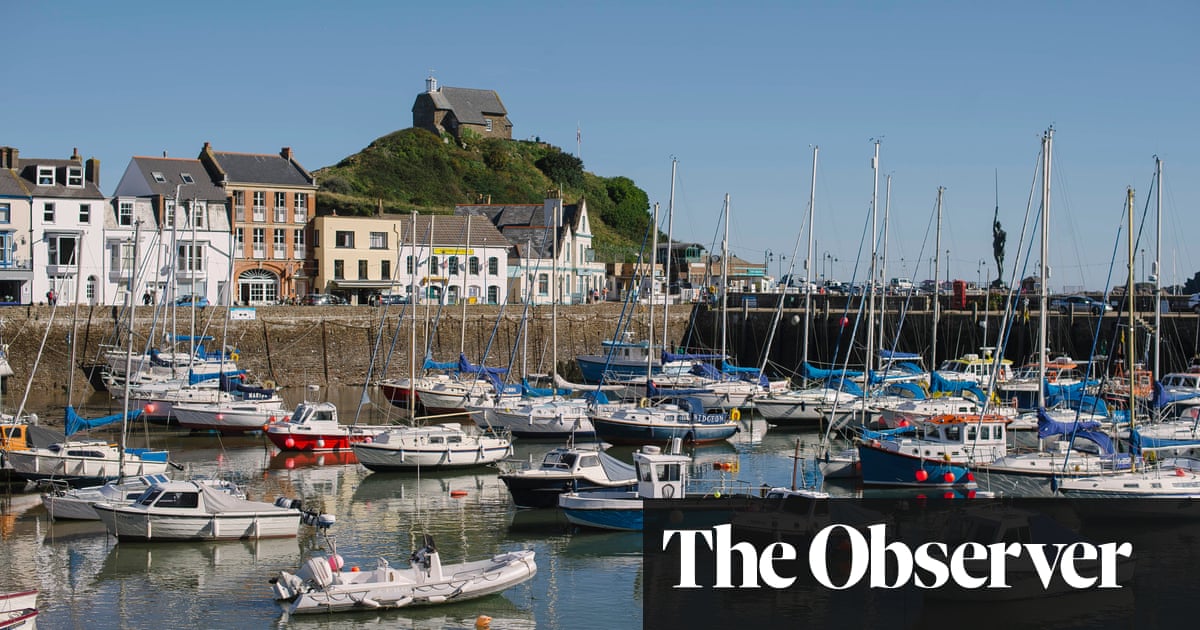
Since its height in 1911, when census figures recorded almost a million Welsh speakers aged three and over in Wales, the Welsh language has been in a near-permanent state of crisis. Fewer opportunities to speak Welsh at home and school, coupled with a long-term trend of people migrating from Wales, have caused a decline in the number of Welsh speakers. A recent Office for National Statistics estimate indicates that about 895,000 people speak Welsh, but a lower figure is expected when the 2021 census data is published, on 6 December. Now, another factor is contributing to the decline of the Welsh language: the steady rise of second homes.
It’s easy to see why Wales, with its stunning coastline and rural landscapes, has become a favoured location for holiday homes. But the growth in second homes is having a corrosive effect on the Welsh language. In some places, the concentration of second homes is so high that up to 46% of the local housing stock can be empty for parts of the year. In places like Gwynedd, one in every ten homes is a second home. According to government figures, there are currently 23, 974 second homes in Wales. This figure is likely to be an underestimate, as many homes are used as short-term, self-catering accommodation. Because these homes are registered as businesses, they do not appear on council tax lists.
The rise of second homes is contributing to rising house prices. This is pushing out many younger Welsh speakers, who feel understandably aggrieved that they have to leave their home communities. As more communities become places for holiday lets, rural and village schools close. This in turn weakens the predominance of Welsh as the default language in particular communities, causing the “anglicisation” of Welsh-speaking towns and villages, according to Simon Brooks, chair of the Commission for Welsh-speaking Communities.
Geography and place matter for language. Once a minority language is no longer spoken on the street, at school, or in social and community life, its resonance changes. A language instead becomes rooted in the education system as a skill to be acquired, rather than a spoken part of everyday life. Without opportunities to speak Welsh on a daily basis as part of a community, Welsh speakers may find themselves less able or confident about initiating conversations in Welsh – particularly when they’re dealing with the health service, the government and other services.
The case for preserving a Welsh-speaking heartland has been in the public consciousness since the 1920s. More recently, campaigns by the Welsh Language Society, Nid yw Cymru ar Werth (Wales is not for sale) and Cymuned, which pushes for local work opportunities and to allow local people access to housing, have spearheaded the fight for language rights while tying the Welsh language to a broader set of social and economic issues. These organisations see the preservation of Welsh as the key to preventing the erosion of communities and quality of life.
Inspired by ecological and cultural preservation movements, a raft of recent proposals has attempted to counter the decline of Welsh. Planning policies allow local authorities to consider the Welsh language in planning decisions (the Horizon nuclear power proposal on Anglesey was subject to both an environmental assessment and a Welsh language assessment). Given the rapid rise in housing costs and lack of affordable housing, these planning policies need updating. They could, for example, give a higher weighting to developments that strengthen the survival of the Welsh language, or allocate more resources to local authority programmes that would preserve the language, tackle poverty and improve the services available to Welsh-speaking communities.
The Commission for Welsh Speaking Communities was established earlier this year by the Welsh government. It will publish its first report in 2024, and will probably recommend that homeowners obtain planning permission to change their property into a second home. Another proposal could be a variable tax of up to 300% on second homes in particular areas. In addition to this, the Welsh government could strengthen some of the initiatives in community-led housing, such as community ownership models that would transfer property and land to local housing associations or social enterprises, helping to alleviate the housing crisis.
A more radical policy would involve offering tax incentives to encourage people to remain in their areas, or to encourage Welsh-speaking newcomers to move into “threatened” areas. Farmers have been paid levies to nurture endangered landscapes, so why not pay Welsh speakers a similar levy to move to an endangered community and help keep the language alive?
Despite the erosion of Welsh-speaking communities in north and west Wales, there is still plenty to be hopeful about. Cardiff’s council leader, Huw Thomas, has committed to establishing more Welsh-speaking schools and offering more classes taught in Welsh at English-speaking schools. In other authority areas, there are plans to create Welsh streams in English-speaking schools and to open dual language schools. Meanwhile, initiatives such as the Canolfan Cymraeg Cenedlaethol’s (Welsh National College) “Siarad” scheme pairs new speakers with proficient native speakers, giving language learners informal opportunities to mix in places where Welsh is dominant.
Many people learning Welsh are likely to see the language as a utilitarian skill they need in order to get a job in particular sectors, rather than as a language for social interaction. To show why Welsh is an important foundation for people living in and contributing to Welsh society, we need leadership and inspiration. Linguistic and community decline is not inevitable. Given the national and local will, there’s no reason we can’t safeguard the Welsh language for future generations.
Colin Williams is a professor at Cardiff University’s School of Welsh and a senior research associate at Cambridge University












